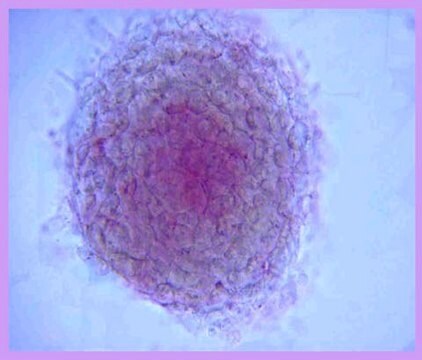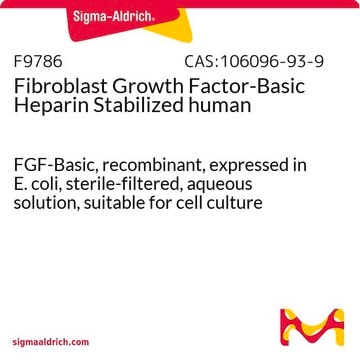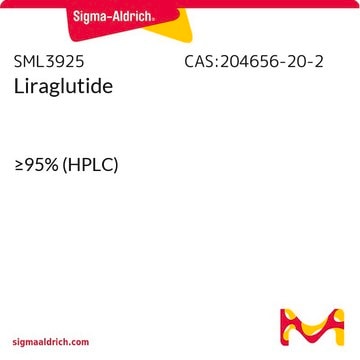SCR030
Human Embryonic Germ Layer Characterization Kit
CHEMICON′s Human Embryonic Germ Layer Characterization Kit allows researchers to assess the differentiation potential of their Human Embryonic Stem Cell (HESC) to form derivatives of all three embryonic germ layers.
About This Item
Prodotti consigliati
Livello qualitativo
Reattività contro le specie
human
Produttore/marchio commerciale
Chemicon®
tecniche
cell culture | stem cell: suitable
immunocytochemistry: suitable
input
sample type induced pluripotent stem cell(s)
sample type: human embryonic stem cell(s)
Condizioni di spedizione
wet ice
Descrizione generale
Mesoderm: bone, cartilage, muscle, blood and vascular system
Endoderm: gastrointestinal tract, respiratory tract and endocrine glands (including liver and pancreas)
Ectoderm: nervous system, skin
CHEMICON®′s Human Embryonic Germ Layer Characterization Kit (SCR030) allows researchers to assess the differentiation potential of their HESC to form derivatives of all three embryonic germ layers. Included in the kit are antibodies that are routinely used by stem cell researchers to identify the lineage fates of HESC following either spontaneous or directed differentiation.
Mesoderm: Smooth Muscle Actin (CBL171)
Cardiac Troponin I (MAB1691-50UG)
Endoderm: Alpha Fetoprotein (2004189)
Ectoderm: Nestin (ABD69)
MAP-2 (MAB3418-50UG)
Applicazioni
Stem Cell Research
Componenti
50 μg of Smooth Muscle Actin mouse monoclonal CBL171
50 μL of Nestin rabbit polyclonal ABD69
50 μg of Cardiac Troponin I mouse monoclonal MAB1691-50UG
50 μg of MAP-2 mouse monoclonal MAB3418-50UG
Stoccaggio e stabilità
Note legali
Esclusione di responsabilità
Avvertenze
Warning
Indicazioni di pericolo
Consigli di prudenza
Classi di pericolo
Acute Tox. 4 Dermal - Acute Tox. 4 Inhalation - Aquatic Chronic 3
Codice della classe di stoccaggio
10 - Combustible liquids
Certificati d'analisi (COA)
Cerca il Certificati d'analisi (COA) digitando il numero di lotto/batch corrispondente. I numeri di lotto o di batch sono stampati sull'etichetta dei prodotti dopo la parola ‘Lotto’ o ‘Batch’.
Possiedi già questo prodotto?
I documenti relativi ai prodotti acquistati recentemente sono disponibili nell’Archivio dei documenti.
Il team dei nostri ricercatori vanta grande esperienza in tutte le aree della ricerca quali Life Science, scienza dei materiali, sintesi chimica, cromatografia, discipline analitiche, ecc..
Contatta l'Assistenza Tecnica.








